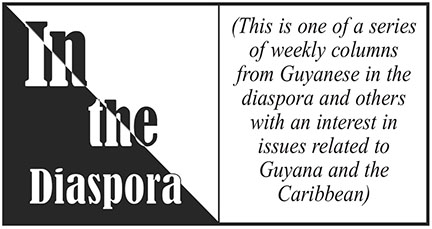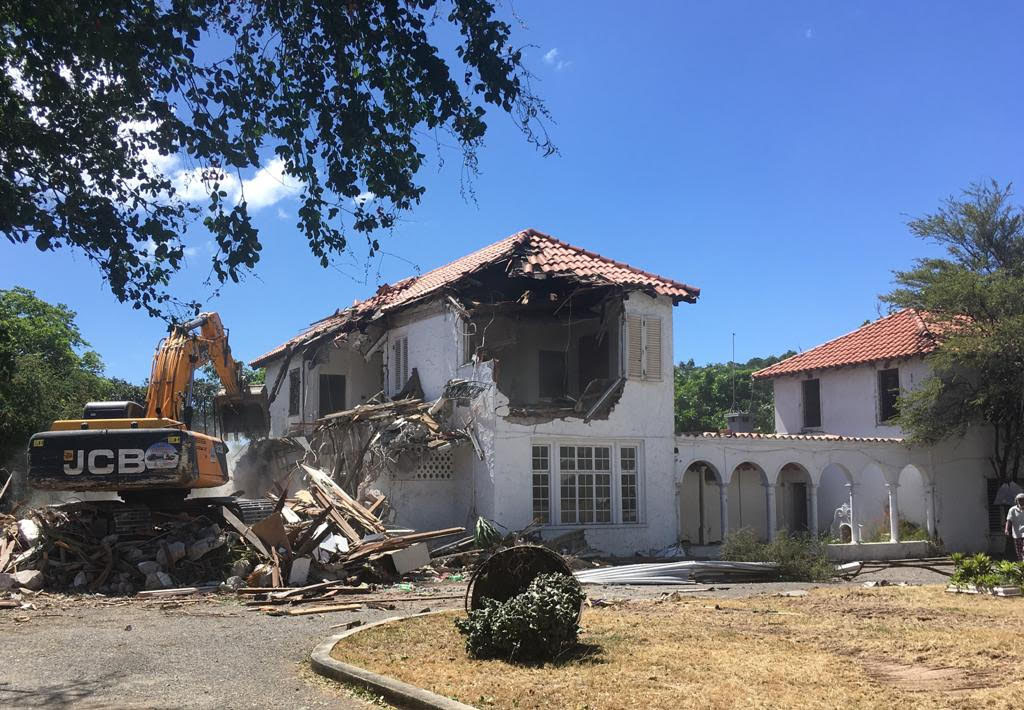By Honor Ford-Smith
Associate Professor, Cultural and Artistic Practices for Environmental and Social Justice
Associate Director, Centre for Research on Latin America and the Caribbean
York University, Faculty of Environmental & Urban Change
What do you want for your cities, your villages, your communities, this region that is our home, the home of our children’s futures?

What is Kingston now? Is it a place where human relationships can flourish? A place where we care for ourselves and provide shelter for the people in an environment that is relentlessly and stunningly beautiful in spite of the evil doing and done to it?
Aye, Jamaica will break your heart. And it will break it again and again. BUT …and this is the BUT….the most brilliant, original, gifted and yes loving and caring people you will ever know are from there. Why can’t they prevail?
Why is that the Johncrows who follow in the tradition of the teefing conquistadors, plantation owners and pirates prevail? Money loves money…that is what the system we live in is all about – But why is it that WE allow THEM to rule over us?
Yesterday one small, apparently minor event triggered this outburst. It was one small event – nothing in comparison with the murder statistics, the femicide, the absence of chairs in schoolrooms and the lack of computers in schools and homes in these times of virtual education. Nothing in comparison to the bribery we give a pass to, the destruction of what is left of our beaches and the mining of our heartlands.
Yesterday I learned that developers tore into what was one of a very few beautiful old houses still left in Seymour lands in Kingston. Built in the style of North African architecture, it stood on green space and was not yet hidden behind the towering prison like walls that have become the norm in Kingston. I am not here arguing for the preservation of icons of the wealthy. I am arguing for the importance of public space and green space in a city that is changing rapidly. I am arguing for us to make use of the natural assets that we have and not commit to mimicking the profound ugliness and alienation of northern cities.
This old house on Seaview, already crumbling, like many others before, could have been a stunning public space – a place to take your kids for an experience of the massive collection of anticolonial nationalist art that it housed until recently. It had held a collection of the work of the artists that emerged in the 1930s, Albert Huie, Edna Manley among them and the work of Karl Parboosingh and other painters who followed them and others. That collection could have been extended on site and shared with the public.
The Cuban Revolution oversaw the development, not destruction, of many sites like that. Santiago, our twin city, is full of lovely old houses re-appropriated as public space. They are still beautiful and everyone can enjoy them. Barbados seems to have managed to do a better job at transforming some of its old colonial sites into places folks can go and relax. Trinidad and Tobago too.
We, in Jamaica, on the other hand (in so far as there is a we…is there?) seem to think our architectural legacy should be a chain of derelict used cars, suffocating concrete boxes and car marts dotted around the countryside on land where we should be growing food to fill the hungry bellies of our children. YES, I said hunger. There is hunger in Jamaica in spite of the elite myth that you can’t go to bed hungry in what used to be the land of wood and water and is now the land of cement and carbon.
A recent terrifying report published in the Jamaican Gleaner newspaper shows that hunger is still with us. And malnutrition haunts us too.
How is hunger connected to the destruction of an old house? It is connected because it signifies a cynical disrespect for the environment and the needs of the people in it. It signifies contempt for our children. And it signifies a dangerous worship at the altar of private profit when every religion and philosophical tradition tells us loud and clear that money cannot buy happiness and health.
Pre-covid, every weekend Devon House, one of a very few green areas and cared for public spaces in Kingston, would be rammed to capacity because Kingstonians have nowhere to take their children for a cheap afternoon out. People long for a place that is peaceful and beautiful where they can go to release the stress of the hustle. God knows they can’t go to the beach. They are locked out of most of those. On week-ends or holidays at Devon House you would have to line up for hours to buy ice cream. Even Hope Gardens – another old and historic park – has shrunk dramatically as pieces have been sold off and Hope is far for folks from downtown. You can’t get into the Bob Marley museum on Hope Road because it costs a bomb. Who can pay that admission for their kids? Even the church yards and cemeteries have become unkempt and inaccessible.
This old house on Seaview Avenue or any other of the many that have recently been torn down could have been another such site. It could have been an alternative. It was built around a central courtyard with interiors opening on to it. Every detail of the interior was carefully designed with the tasteful use of Jamaican hard wood and amazing iron work. There could have been a shop selling ice cream and snacks and there could have been places to sit under the cool shade of huge trees. It could have had a vegetable and herb garden. Everywhere else in the world is trying to get urban agriculture going. We who have long had a tradition of kitchen gardens seem to be ashamed of ours. There could have been housing too in a small part of it. The best way to keep cultural sites alive is to combine them with housing. It could have had people living there -affordable housing that would allow people to get to work easily without sweating and punishing in traffic for hours and cussing because our public transportation system is a four-letter word. It was a place that was easy to get to, as many buses run up the Old Hope Road and from there you could look up into what is left of the (soon to be destroyed) Long Mountain and Blue Mountains.
I do not believe that the people of Jamaica would approve of what is happening in Seymour lands or in lots of other places. But they haven’t been asked. Nobody asks. It’s all just a matter of “I’m gonna get my share now of what’s mine and to hell with you!” That this could happen in one of the only suburbs of Kingston that has the possibility to offer centrally located and green public space is frightening. Why? Because this is a relatively rich suburb. While many of Kingston’s gentry have fled into the salubrious heights of the hills, this area is still home to people who should be able to make a difference. It is home to business leaders, owners of large corporations as well as lawyers, architects, doctors and other professionals. It is also home to students and others who are not in middle and upper middle class. It has a housing trust scheme built for poor people long ago. It has small restaurants like the one off Lady Musgrave that sells the best soup in Kingston. As it is now, it holds the seeds of something quite wonderful, if only we would get together and take it seriously and support it.
My understanding that there is a neighbourhood association, in one part of the area that has been raising concerns about what is happening. The Golden Triangle Neighbourhood Association has been raising concerns. Why is nobody listening? If this well-off suburb can’t hold back the hand of the vulgar neoliberal pirates and guineagogs, what hope then for the rest of us? Will the next building to be crushed be the one at the corner of Hopefield and Lady Musgrave, the historic site where the University of the West Indies started? I can see the developers drooling now, their wallets throbbing with anticipation as they look at the green space, around this building.
If we continue at this race, it’ll be all over folks. Carbon and disease forever and the hinges of hell will be cooler than our city if we can’t come up with an alternative to enjoying the age of me. The trees are being destroyed to make way for concrete structures and the birds have already fled.






